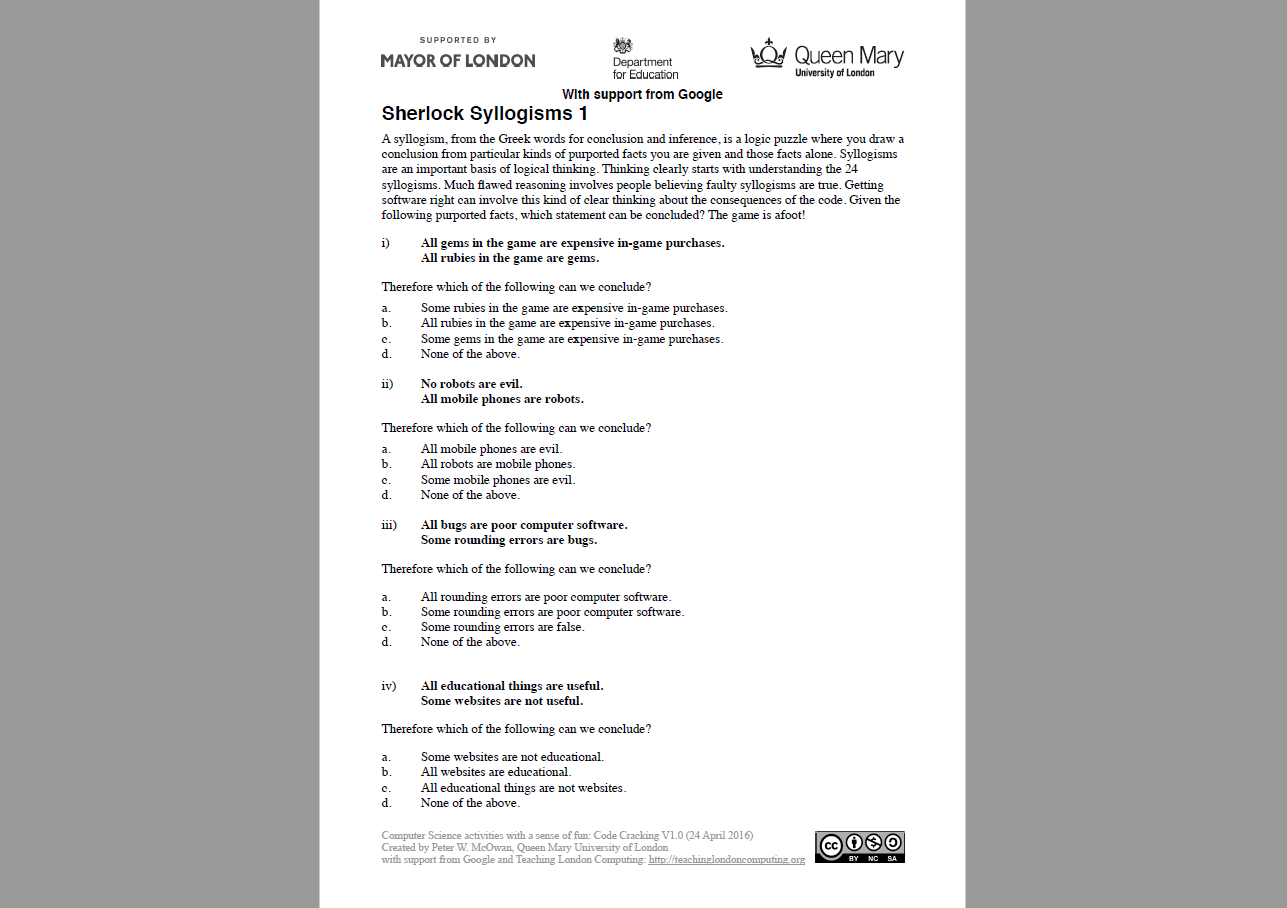These logic puzzles with answers are an excellent tool for teaching logical thinking and reasoning in KS2 and KS3 computing.
This activity bridges critical thinking and computational logic through engaging syllogisms. These logic puzzles with answers prompt students to draw conclusions based on given facts, helping them build foundational skills essential for coding and debugging.
What is a syllogism?
A syllogism is a type of logic puzzle that comes from the Greek words for “conclusion” and “inference.” It presents a set of premises – statements assumed to be true – and challenges the solver to determine a logical conclusion based solely on those premises. For example:
- Premise 1: All gems in the game are expensive in-game purchases.
- Premise 2: All rubies in the game are gems.
- Conclusion: All rubies in the game are expensive in-game purchases.
Syllogisms are a fundamental component of logical reasoning and critical thinking. They encourage students to think carefully about relationships between ideas and avoid faulty conclusions.
This form of structured reasoning is invaluable in computing, where clear logic underpins effective programming.
Logical thinking and computing
Logical thinking is a cornerstone of computing. This logic puzzles resource, with answers, introduces students to syllogistic reasoning – a method of understanding relationships between premises and drawing valid conclusions.
Such skills are directly applicable to problem-solving in coding, where students must anticipate the outcomes of algorithms and debug code effectively.
Engaging and accessible
The puzzles are designed with a sense of fun, incorporating familiar contexts like games, robots and websites. This relatable content helps demystify abstract concepts, making logic approachable for younger learners.
You can use these examples to spark discussions, explore real-world applications of logic and encourage collaborative problem-solving.
Curriculum relevance
For KS2 students, these activities align with goals such as understanding algorithms and recognising patterns.
At KS3, they deepen understanding of computational logic and critical reasoning. The structured format encourages students to think methodically and supports their transition to more complex programming challenges.
You can integrate these puzzles into lesson plans, whether as a starter activity, a group challenge, or homework. The focus on clear reasoning also complements other STEM subjects.
Teaching London Computing is a resource hub from CAS London and CS4FN. Download more Teaching London Computing resources.

Similar resources
- National Coding Week – Topical coding activity pack for schools
- Computing medium-term plan – Code a simple game in Scratch
- Critical thinking lesson plans – KS1 and KS2 ideas and worksheets
- Coding KS2 – Use a micro:bit to track your dance moves
- Cobweb by Michael Morpurgo – Cross-curricular activities for KS2













